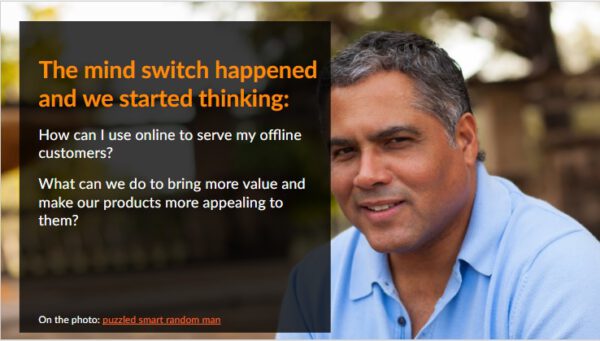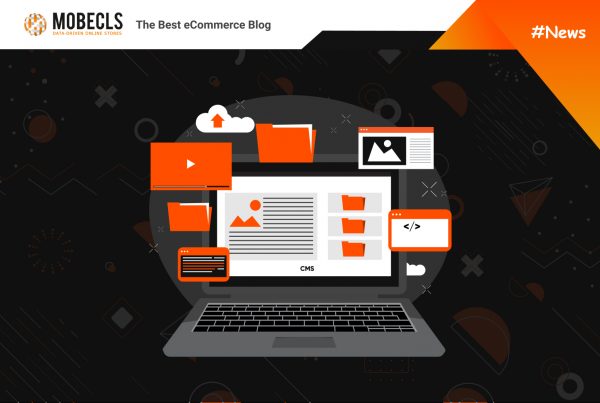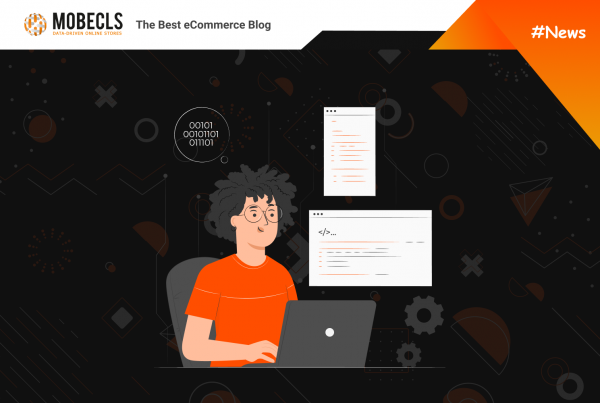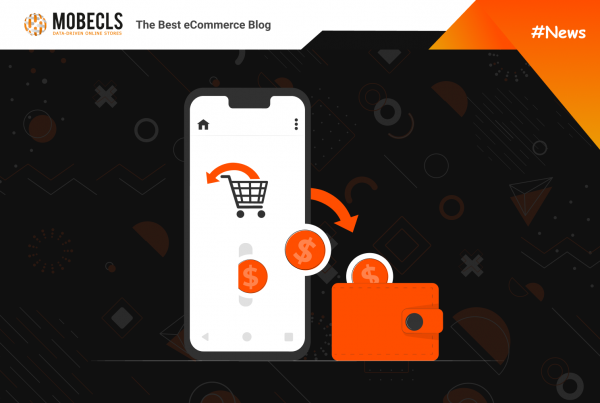Why do people decide to start an eCommerce business? You may think that it’s a rather strange question. What do you mean, why? Online sales surpass offline and drive customers away from brick and mortars. Shoppers become more mobile and prefer shopping on the fly. eCommerce breaks the borders and let the business go worldwide. It’s hard to challenge these arguments because it’s the truth.
However, I want to ask you a more crazy question. What do you think of boosting offline sales by starting an online store? Isn’t that exciting? That’s why I want to share with you a fascinating growth story of Vapor Source, a company that rethought the whole eCommerce concept starting from marketing to business model.
Intro
My name is Artem. I’m a General Manager at Mobecls, a Magento specialized support agency. This September I got the stage of Meet Magento New York with Ryan Ehlers, IT Executive at Vapor Source and the founder of Pueblotech, to share their growth story.
Vapor Source is Colorado leading vape retailer and manufacturer with 9 offline stores and warehouses.
It’s not an ordinary story as you may think. I was also thinking that online stores are about sales, nothing more. I had this strong belief due to my marketing background and education.
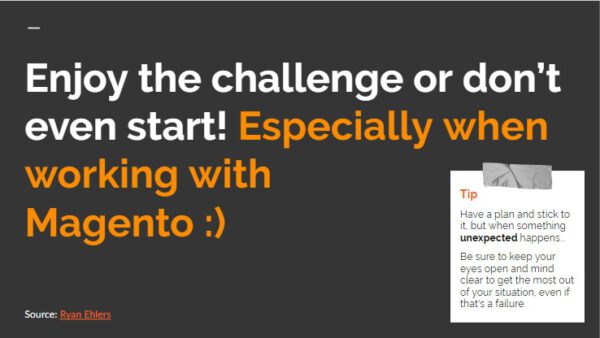
Back To 2009
In early 2009, Jason, the founder of Vapor Source, decided to open a small store in Pueblo, Colorado. During that time he was trying to give up smoking. That was the time when the first vapes entered the market and he decided to try them. It turned out that vaping helps to quit smoking.
He conducted small marketing research to find out whether this business was perspective. Firstly, he convinced his family and friends to start vaping. Then, he was asking his customers or just curious people if they would try vaping to get rid of cigarettes. The results showed that people were interested in finding smoking alternatives.
What is the best thing about vape business? It’s a subscription service as people need to renew juices constantly, making clients loyal, and pushing them to spend more money. It sounds like an eCommerce heaven, doesn’t it?
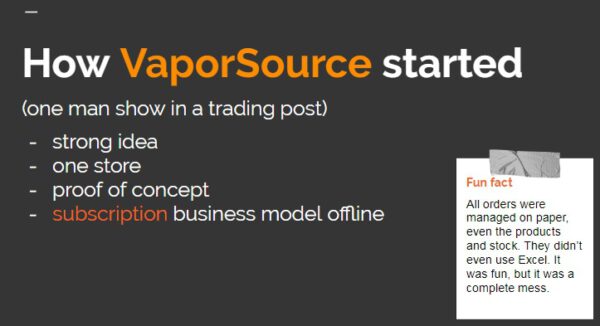
Despite great opportunities, it was a painful decision for Jason to fully dive into vape business. Nevertheless, he decided to take the risk and opened the first Vapor Source store.
The company was hesitating during its first year. They were not developing any strategy, just listening to clients and gathering their feedback to understand the market reaction.
In about 6-9 months it became clear vaping would become a goldmine. Jason decided to open the second store. That meant two things for Vapor Source: they needed an internal system, connected to POS terminals, to manage all the orders and products and some digital presence. It was the moment when Ryan joined the company.
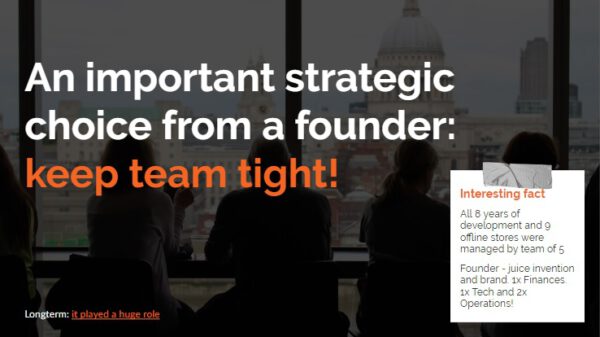
The founder of the company didn’t want to build a huge company with hundreds of people and just wanted to keep his team small and tight. It was a conscious decision as such teams work more effectively. Everyone knows what and how to do in the best way.
First Days Online (2011)
Ryan started looking for the systems that may help him to move operations to digital and scale the future ones. He chose QuickBooks for internal operations. It’s a solid stationary system with a master base in the main office. It was a good choice.
At that time, Magento and Shopify were just getting into power, so the easiest eCommerce solution was Zencart. Ryan installed it, changed the design, and added product descriptions. SEO optimization was the last thing to be done.
It was the time when the Vapor Source team faced the first challenge and made some important decisions. Search engine optimization back then was pretty simple as you could just buy some links, write some content and that’s all. It was pretty easy to drive traffic to the website. The same thing was with Google AdWords. The traffic was increasing but it wasn’t converting at all!
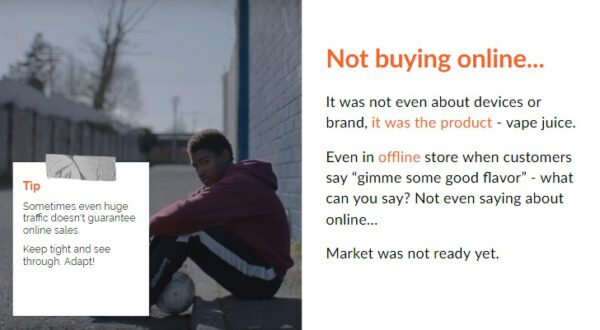
It was the first big frustration for the team — even if you have traffic, you can’t make sales because people are not ready to buy this thing online. Simply put, they had traffic but not sales. That’s why Ryan decided to fully focus on driving traffic to their offline stores by making the brand credible online. He wanted to show people that the product and brand were legit, not some no-name imported stuff, but a home-produced, certified and licensed manufacturer.
The idea worked out. People were coming to offline stores like crazy increasing offline sales twice. The team started to open more stores, sell more vapes and Ryan was very busy keeping all the systems work well until the next growth phase.
Going Online 2.0 (2013)
Vapor Source opened a couple of stores and the system was working fine as everything was settled and configured. Everyone knew what to do and Ryan had more time to work on the online store. There were some issues with Zencart as it didn’t have configurable products. It was a problem as the Vapor Source catalog was full of them.
Fun Fact: Zencart didn’t have configurable products but we didn’t know that. Actually, nobody knew what configurable products were at all
If you’re an eCommerce enthusiast, mark your calendars for October 10-11, 2023, because Meet Magento New York is back and bigger than ever! This premier eCommerce event brings together industry leaders, seasoned professionals, and visionary merchants for two days of inspiration and innovation. Join us and discover why attending such events is the coolest way to stay at the forefront of digital commerce and unlock new possibilities for your business.
Mobecls Team At Meet Magento New York 2023
By that time, Magento had been developed significantly. The system had solid features and seemed to be a nice platform with a bright future. Ryan decided to give it a chance and started building an online store from scratch.
Ryan manually migrated the whole catalog, made some template fixes, installed extensions, and launched the website. The next step was SEO best practices implementation: sitemaps, robots.txt, interlinking, meta-tags templates, and content. All of these features were built-in what brought immediate results.
However, everything wasn’t perfect yet. The sales were not so good to invest more in the online store. Moreover, the industry has become highly regulated and it was pretty difficult to run any marketing campaign on the Net. Even AdWords became a pain in the ass just because we had to avoid almost every keyword that was connected to vapes.
It was very difficult to scale online sales. Nevertheless, there was a feeling that people were missing something with all those regulations. Not only the company was frustrated by this situation, but a lot of people too. They just wanted to give up smoking or switch to nicotine-free vapes but they couldn’t freely discuss vaping and get the latest information about it online. That was an opportunity. Ryan decided to exploit it by creating a CSFA (Colorado Smoke-Free Association) — a website where people could freely discuss the topic. It helped to strengthen the brand’s positions and ensure credibility.
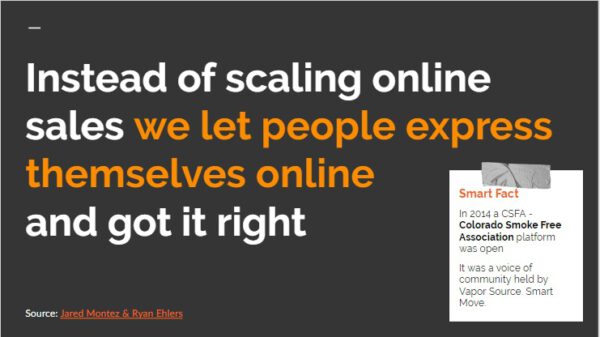
It was the second time when the team tried to boost online sales. They got some positive results and broke free from deadlock. Ironically, these measures led to offline sales growth. It was a big win for offline but a failure for online sales. The Vapor Source website became just a catalog for local customers.
Rethinking Business Model (2015)
It became clear that online sales couldn’t catch up with offline ones. That’s why the team decided to use online sales to make the most of 50.000 loyal clients. Vapor Source implemented a “buy one get one” extension a.k.a. BOGO.
Back then Magento didn’t have this feature and 3rd party extensions couldn’t comply with its technical complexity. That how it should have been worked: Customer buys any products from specific categories. If the products are the same in size, a user gets one bottle of the same juice of this category for free. If juices are from different categories, a client gets a discount.
The extension isn’t so interesting itself like the idea behind it. We decided to use this promo to raise the average order amount from our loyal customers instead of trying to bring new customers.
QuickBooks Frustration (2016)
By that time we already had 9 stores and faced QuickBooks frustration across all the departments.
There were more and more database corruptions and it wasn’t an easy thing to fix. We couldn’t merge the databases from different stores. We had to send all the data to the QuickBooks support office to fix the issues. Usually, it took a couple of days for them to do it and send our data back.
After these hotfixes, the staff had to add all the orders that we were getting during the restoration works back into the database manually. Moreover, it wasn’t an easy walk to keep all the loyalty points updated because we were synchronizing all the data in the evenings. It was a reason for one more problem. Customers were losing discounts shopping in different Vapor Source stores because of synchronization issues.
Jason also added some fuel to the situation by sharing his new strategic plan. He wanted to open 10 new stores in 2 years. If it had happened, QuickBooks’ yearly license cost would have become astronomical.
Migrating to Magento 2 (2017)
We started looking for new options that could help us to manage the business and sales. By that time Magento 1 was well-known for its performance issues and Magento 2 wasn’t a solid platform yet. We just kept searching. It took about a year to review all the options, but then Magento 2.2 rolled out.
It had an MSI (multi-source inventory), business intelligence out-of-box features, and enhanced performance. The better architecture and ability to split the database gave us new hope. Why? It became possible to make more stores work within one Magento installation.
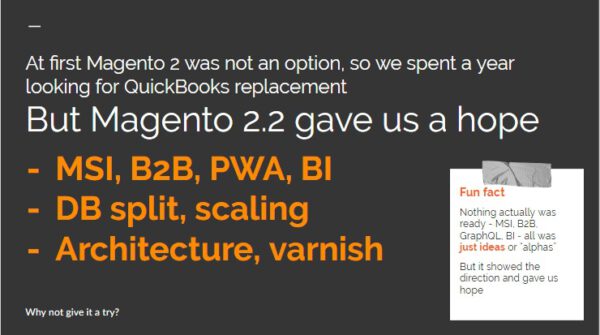
We could keep CRM, ERP, accounting and reports, loyalty programs, and POS using a single platform! Magento 2.2 was what we were looking for for so long.
We decided to embody the concept of “one roof” and migrate all the data to see how it would cope with it.
Developing Magento 2 Strategy (2018)
Building something from scratch is a tough task. At first, we had to decide whether to use Magento Commerce or just Open Source version. Business intelligence reports were luring us but we didn’t like the idea of revenue sharing.
It wasn’t the main reason why we had chosen Magento Open Source. We simply had to customize almost every part of the platform: inventory and stock, POS checkout, customers and loyalty points, orders.
We started looking for extensions that we could use as a base for our solution. You must know how difficult it is to make extensions from different vendors work together. That’s why we decided not to buy any Amasty or Mageworx high-quality extensions. We were just looking for a provider that could simply give us the most needed features.
Finally, we found a set of extensions that covered inventory, reports, POS checkout, and internal transactions. We just had to customize them according to our business specifics. Once that was done, we started the whole QuickBooks migration to the Magento database. We wanted to get rid of QB as fast as possible because we wanted to have all the data above one roof:
- Products, attribute, images
- Inventory and warehouses
- About 100.000 customers
- 1.000.000 orders
- Customer rewards history
We tried some services that allow QB to Magento migration, but they didn’t work well. Probably, it was happening because of our big database and the changes we had made during our 8-year journey. One of the biggest hurdles was that product names in QuickBooks were not human-friendly and were used internally. We had to fix that.
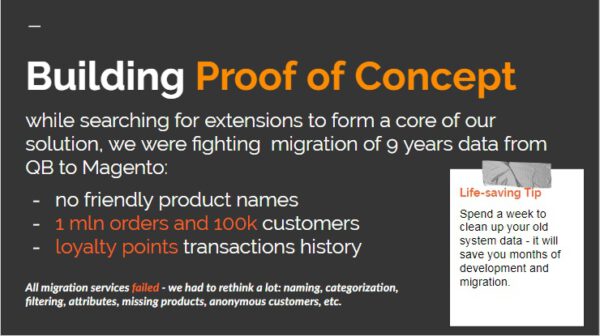
There were also some issues during product import as we had to rethink our categorization, naming, and filtering to make them convenient for customers and POS employees. Then we wasted some time on order import as some products were missing. However, we wanted to keep them to tie up the reward points history.
What is more important, we couldn’t just jump into Magento after the full QuickBooks import. We should have run both systems for some time. We’ve made a daily script that synchronizes the latest customers, orders, stock, and rewards from QB to Magento 2.
While we were migrating the data and test piloting our solution, that was built on Magento 2.2.6, Magento released a better PWA version, GraphQL updates, and 2.3.2 version. But for now, we’ll launch what we have this year. Next month we’ll roll our POS solution for the first offline store and test it works for a couple of weeks to get customer service team feedback.
Final Thoughts
So this is the story of how we’ve tried to get direct value from an online store but ended up having a huge positive impact on offline sales and local brand identity.
We hope that POS solutions based on Magento will help us bring 10 more offline stores, and to keep the core team tight yet effective in its decisions. Having everything under one roof will also give us endless possibilities for business intelligence and next-generation marketing.
While there were a lot of Technical insights like Magento POS and using Magento as a center of all operations, we decided to concentrate on the idea that online business may help offline win the competition and dominate the local market.
![]() Mobecls team offers fixed-price service packages for Magento store support. Moreover, we’ll help you to choose a plan according to your business needs and specifics. The starting price is $2000. You can also select the number of working hours and the range of services. A service package may include updates, the installation of modules, bug fixing, SEO support and many more. Contact us and we’ll help you.
Mobecls team offers fixed-price service packages for Magento store support. Moreover, we’ll help you to choose a plan according to your business needs and specifics. The starting price is $2000. You can also select the number of working hours and the range of services. A service package may include updates, the installation of modules, bug fixing, SEO support and many more. Contact us and we’ll help you.

